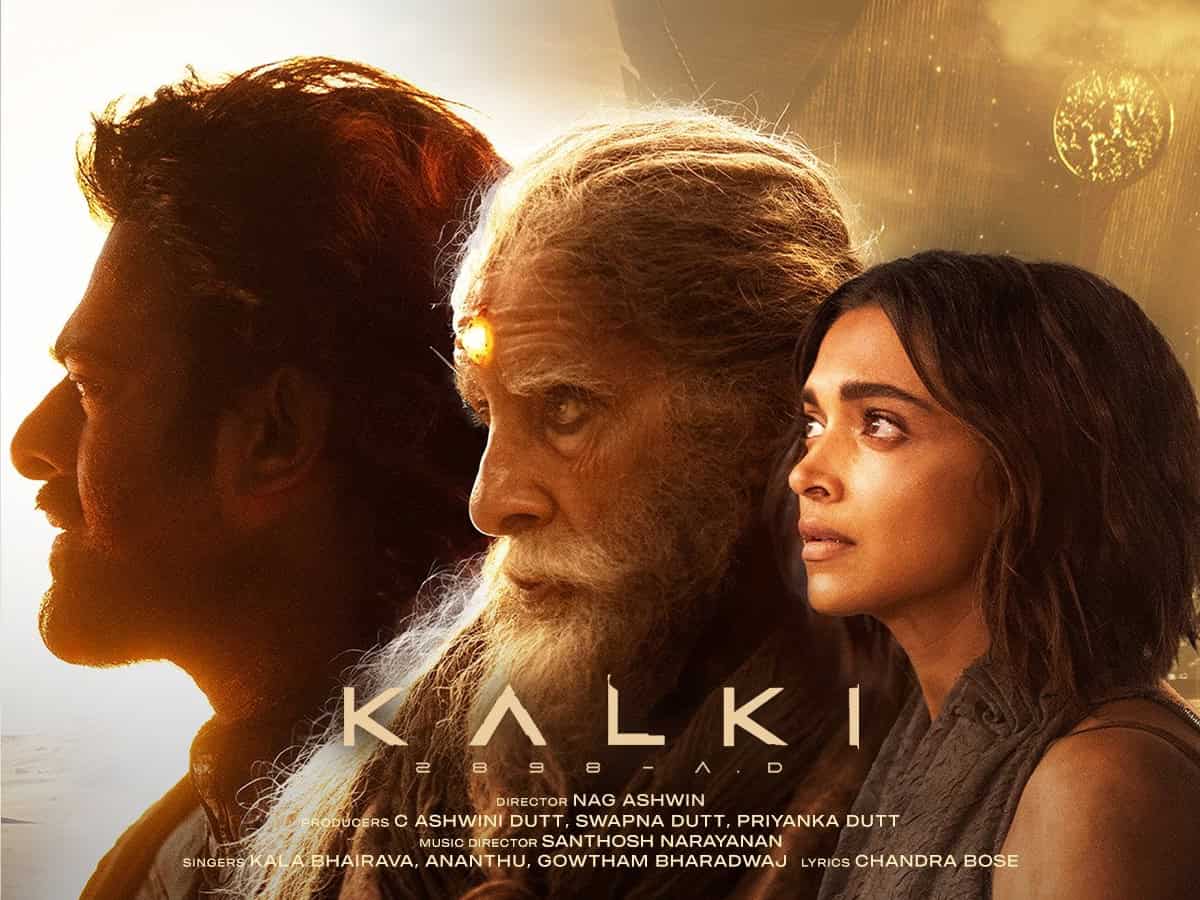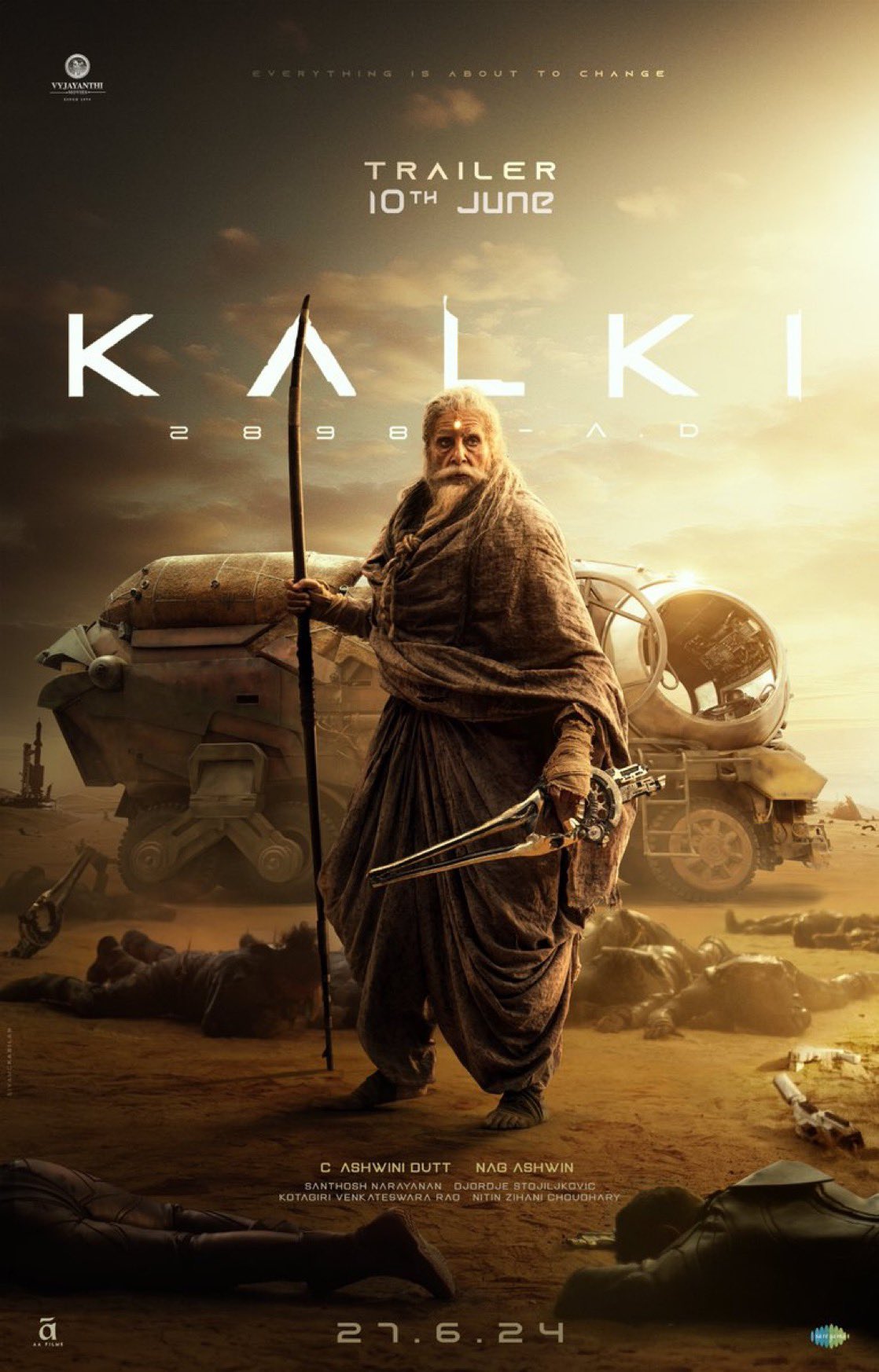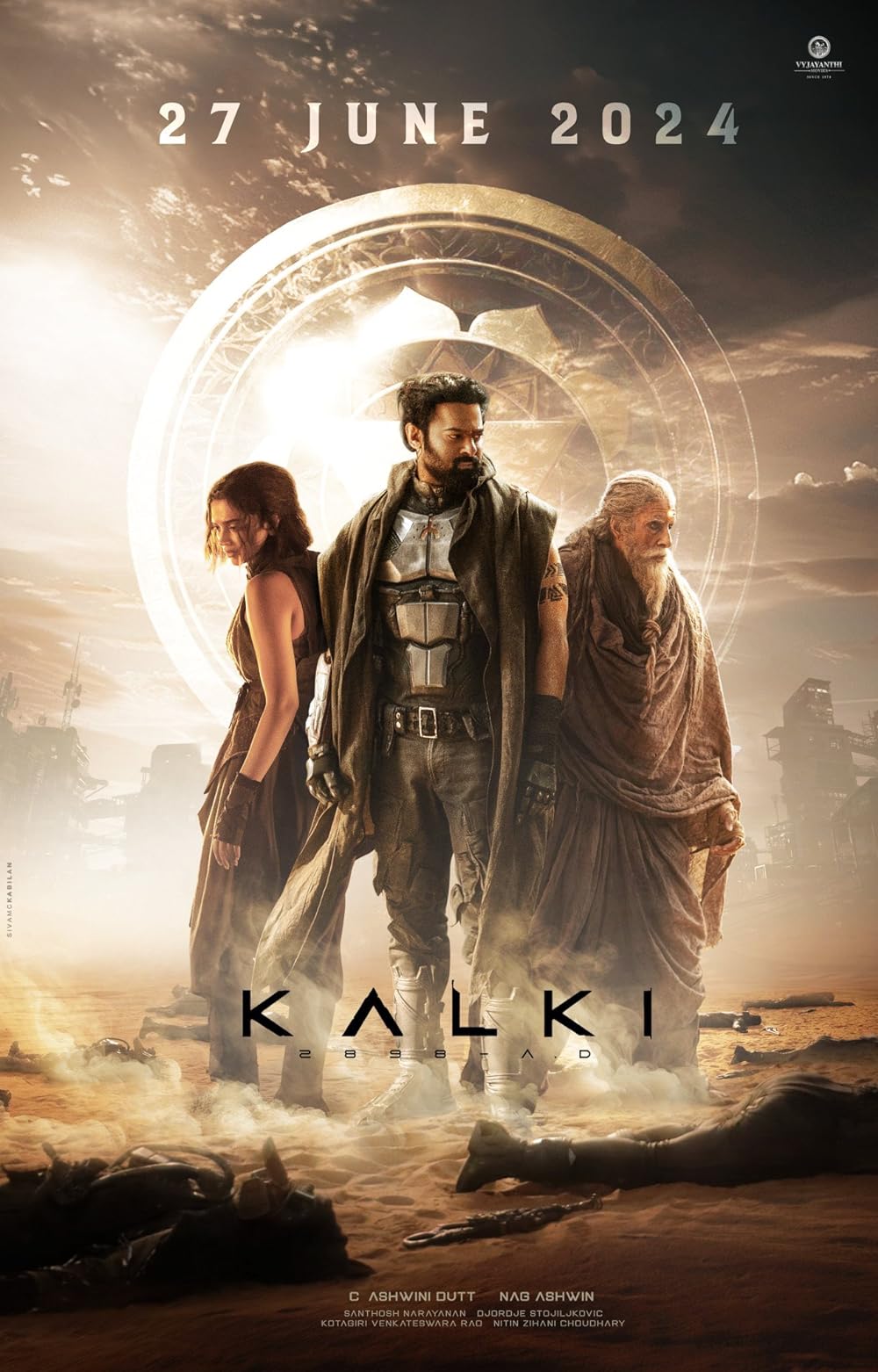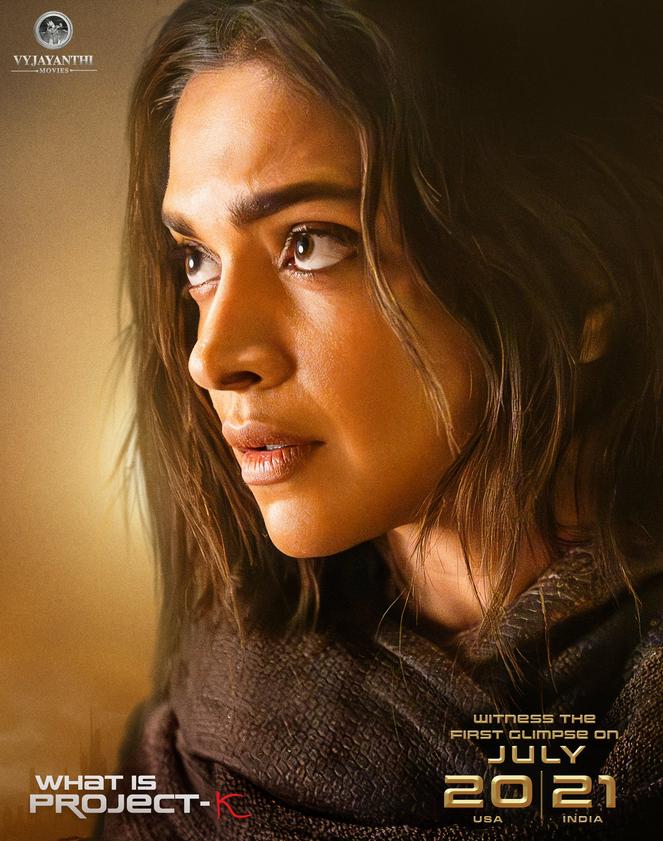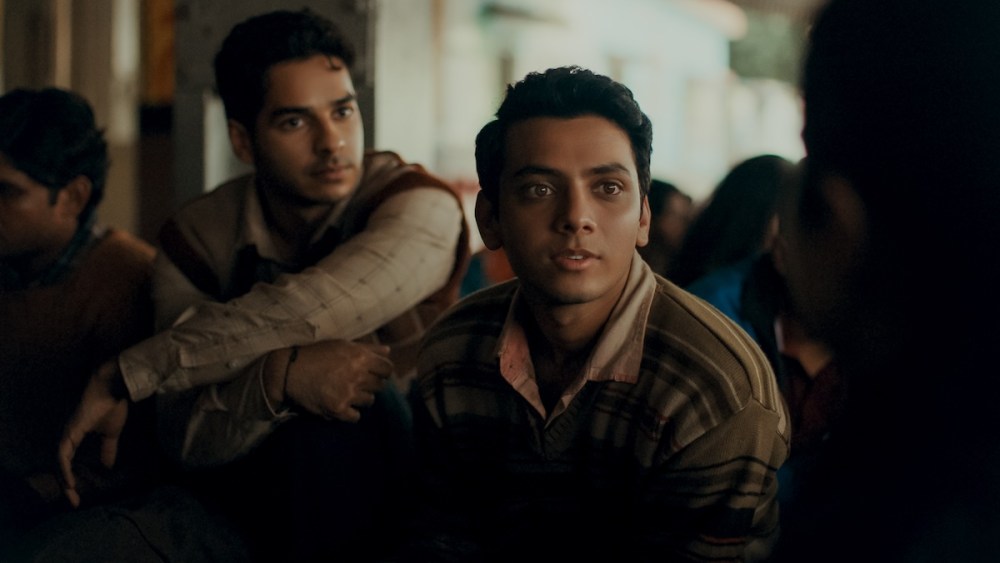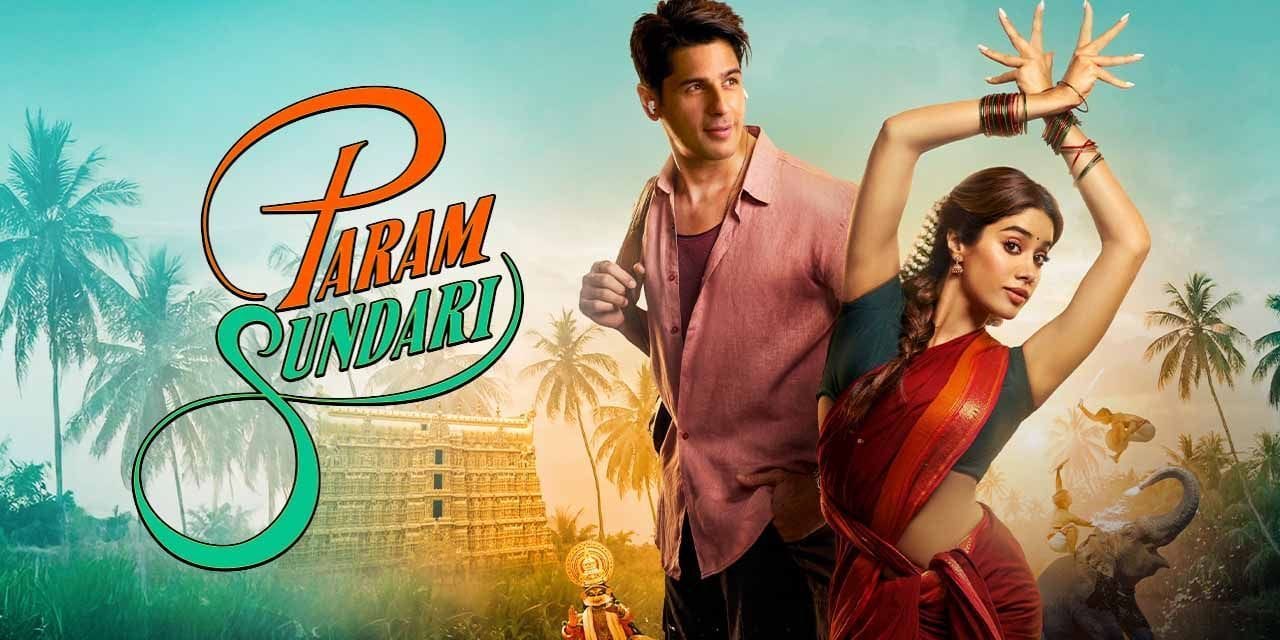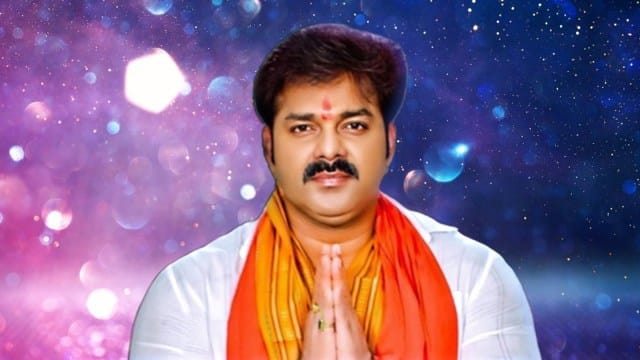Spoilers ahead!
The trailer had our sand-filled knickers in a knot – is it a Dune and Mad Max Fury Road rip-off? Or worse, is it another Adi Purush? Despite Prabhas rocking the proverbial boat, aided by weak dialogue writing and stunted secondary characters, Kalki stays afloat – steered steadily by Big B’s compelling Ashwathama and commendable visual effects. Bonus: a free easter-egg hunt of popular culture references. Why should you not miss the first part of this epic dystopian saga?
Despite Prabhas rocking the proverbial boat, aided by weak dialogue writing and stunted secondary characters, Kalki stays afloat – steered steadily by Big B’s compelling Ashwathama and commendable visual effects.
Nag Ashwin, of Mahanati (2018) fame, had taken on the challenge of charting new visuals in Indian cinema while building a science fiction saga set on a mythical premise. Budgeted at 600 crores Kalki stands on the strong legs of VFX – which was majorly outsourced to Indian-British studio Prime Focus DNEG and Canadian studio The Embassy Visual Effects. The film opens in the ruinous battleground of Kurukshetra. The de-aged CGI young Amitabh Bachchan is a shock from the uncanny valley. It is surprisingly eerie and makes one wish Abhishek Bachchan was cast instead.
The first few minutes are the worst visuals Kalki has to offer, and even then they are eons better than what we have seen in previous attempts like Brahmastra or Adi Purush. The 2D animation sequence in the first few minutes is more panache than information. The film recently ran into controversy as Hollywood concept artists accused producers – Vyjayanthi Movies, of copying their artwork for this sequence.
Kalki soon progresses from Mahabharata to 6000 years later – in post-apocalyptic Kashi. A drought-ridden land with a dried river bed of Ganga, Kashi is run by a supreme leader from a “ministry” called Complex. As the film commences and the audience is introduced to the world of Kalki – it is undeniable that such an imagination of India has not existed before in cinema. One has to hand it over to the creative team to bring together cyberpunk elements and desi details in an almost seamless design. From the little toddy shop with a neon sign to the steampunk tarot-reading parrot to the Shri Yantra on the gong to the peacock-referenced shields and spears – Kalki ensures that it stays rooted to India even as we are flooded with not-so-subtle Western pop-culture references. The stormtrooper suits are very difficult to miss.
A messiah, a post-apocalyptic world and rebels fighting imperials
Kalki feels like a fever dream as the feeling of deja vu never leaves you. The overarching storyline is unabashedly reminiscent of Dune but a lot of the original mythology quite naturally overlaps. Similar to Dune in Kalki we wait for the birth of a Messiah in a post-apocalyptic world while rebels fight an imperial faction. As was expected from the trailer the floating vehicles remind us of Mad Max Fury as do the costume designs. But there is much more than that.
One of the stylistically standout sequences where Deepika’s SUM-8 in a decidedly Handmaid’s Tale setting tends to one of the pregnant women in captivity is a call back to the Korean classic Oldboy. Bhairava’s AI-powered machine-friend Bujji is a marriage between the spunky R2-D2 from the Star Wars universe and the Bat Mobile – which metamorphoses into a beast right out of Transformers by the end of the film. The hidden village of the rebels in Shambala is a call back to Wakanda Forever.
Shambala is also heavily referenced from Dune’s Arrakis. There is the world of drought and difficulty – Kaashi and the world of affluence and abundance – Complex. As the former dreams of the latter – the audience is reminded of the 2021 Netflix series Arcane. Commander Saswata Chatterjee’s Ronan works for Kamal Hassan’s Thanos-esque Supreme Yaskin – a definite nod to the Avengers. It is also difficult to not think of the same as Krishna plucks the Chintamani out of Ashwathama’s forehead – as the story goes in Mahabharata. The list is long and complex – but the references are more pastiche than plagiarised. For any popular culture fanatic, Kalki will be a charming game to dig out references and also ponder how a lot of these science-fiction or dystopian world creations were based on mythologies.
Of the mythology, while there are characters who are directly derived like Ashwathama or Krishna or even Karna – there are indirect references like Dulquer’s evergreen Captain alludes to Karna’s guru Parashuram and Supreme Yaskin hints at Asura Kali, who is destined to be defeated by Vishnu’s tenth avatar – Kalki. There are a few Ramayana references difficult to miss. As Bhairava/Karna flies Sumathi away on the chariot – it reminds one of Ravana’s kidnapping of Sita. In another instance, Ashwathama picks up a bunch of raiders while protecting Sumathi and holds them upside down across his shoulders. As their heads rested on his shoulders it looked like Ravana’s ten heads. Do these symbols hold narrative significance or are they mere visual accessories? Only a sequel will tell.
All that shines in Kalki– Ashwathama, world-building and more Ashwathama
No saga is complete or fulfilling without a villain who makes you hate them or question yourself. Kamal Hassan plays Supreme Yaskin, the supreme leader of the Complex. He is imagined as a withering sage in white wispy clothes with the five elements of Panchakosha floating around him. It is a familiar image of the Brahmana. The character, based on the few words that it speaks, is a close relative of the philosophical villain that Thanos proved to be – questioning the human condition and its innate evil.
What happened to Ralph Fiennes as Voldemort happened to Kamal Hassan’s Yaskin as the overwhelming CGI and make-up left little room for him to act.
What happened to Ralph Fiennes as Voldemort happened to Kamal Hassan’s Yaskin as the overwhelming CGI and make-up left little room for him to act. In the first offering of this series of films, Yaskin has a minimal role. There is a lot of hope as by the end of the film we see Kamal Hassan emerge from the shell of Yaskin. The world of Kashi, Complex and Shambala have been carefully built and the details show that care. There is a moment when we glimpse at a citizen of Kashi playing the Theremin – a small detail that shows the meticulous work that has gone into building these worlds.
It is also of significance to note that Shambala, set in a mountainous region, has Buddhist references. One does wish there was enough time given for the world to be introduced and contextualised. If only there were fewer unfunny jokes and more relevant conversations. The punch that packs the most power is Ashwathama. Amitabh Bachchan is a revelation as the towering protector of Kalki and the mother, Sumathi.
The action sequences drew out gasps and whistles as the octagenarian lept and landed with feline accuracy – it was a joy to behold Big B in all his glory. He successfully distracts the audience from the fatal flaws of the film – like its weak dialogue writing and a weaker protagonist. In secondary roles, two significant performances are by Anna Ben as Kyra – a happy-go-lucky rebel with nerves of steel and Pasupathy as Veeran – a rebel leader. Both deliver strong performances in the little time and space they are given in the film.
All that drags in Kalki– Prabhas, stunted character development and dialogues
There are some major issues with Kalki– its character development, dialogues and some key performances being the leading three causes of grief. There is a time for a quip and a time to take the plot seriously – Nag Ashwini and his team seem to have mixed up the two. As if overwhelmed by its bleak setting, the film hurries to establish a light tone through Bhairava (Prabhas) and Commander Manas (Saswata). The jokes are awkward and the performances make it worse. For example, after Sumathi escapes through the gates of fire Commander Manas is informed of the surprising escape. He stands in front of two guards who had been burnt to death and says in Hindi, ‘Badhiya tal gaye hain dono!’
A comic relief in intensifying tension can be one of the best moments in a story – but who delivers it, when they deliver and what indeed are they delivering?
A comic relief in intensifying tension can be one of the best moments in a story – but who delivers it, when do they deliver and what indeed are they delivering? Another such performance was Disha Patni’s Roxie. Firstly, the plot is unsure why it needs Roxie, secondly, her stiff performance only highlights the lack of necessity for her character. Not only is her character a problem, but the sequence she facilitates is one of the glaring disasters in the entire film. Bhairava and Roxie enter the Complex and realise there is an entire world hidden away from the people of Kashi here – a world of fruits, flowers, horses – and, was that Michaelangelo’s David? The Ta Takkara track is paired with an equally unbearable dance sequence – and does that end in any major action? No. Bhairava is just politely thrown out of the gate. That is it.
Deepika Padukone’s Sumathi is a central and operative character – all the rebels of Shambala and Ashwathama were waiting for her. As in, her fertilised womb. That is her character – a womb that is rearing the tenth avatar, Kalki. The role has no meat and Padukone struggles to bite into the bare morsel she was served in this part of the story. Shobana as Miriam from Shambala – the rebel leader, tries her best to gain a foothold in the little space she is given in the storyline.
The flab of Kalki is its protagonist. Prabhas’ insufferable Deadpool-esque Bhairava which is a travesty. Santhosh Narayanan makes it five-fold worse with a confounding track – Bhairava’s theme – with Deepak Blue and Diljit Dosanjh. Why oh why must we ‘Rohab Vekho Jatt Da Ve’ in a culturally and ethnically ambiguous setting? Santhosh’s Sarpatta Parambarai’s soundtrack would probably be a better fit than the music he tailormade for Kalki. Imagine Neeye Oli blasting as a convoy of rebels flies in! Instead, we get a surprising mix of sappy melodramatic tunes alternated with some unremarkable generic tracks for the desert journey and action sequences.
A film of this scale and context needed better support from its music director. Coming back to Prabhas, the less we say the better – as would have been the case if the director understood Prabhas’ immense star power and limited skill. Pulling off flared nostrils with a stoney face – as the wolf whistles drown out the rest is easier than delivering poorly written comic dialogues. Helmets save lives? Really? It is embarrassing to listen to Prabhas yapping his way through his first fight sequence.
This film gives us an unprecedented visualisation of dystopian India, one that has been discussed in many a room and imagined in fragments – but never in such cohesive assimilation.
Ashwathama – a storm wrapped in a calm veneer, holds the fort of a beautiful spectacle that is Kalki 2898 AD. This film gives us an unprecedented visualisation of dystopian India, one that has been discussed in many a room and imagined in fragments – but never in such cohesive assimilation. One hopes there are more easter eggs to find upon rewatching, even if one has to suffer through Prabhas’ performance. The film, just like Bahubali, ends in a crucial cliffhanger. Here is hoping the next serving will have more meat and less garnish.
About the author(s)
She/they is an editor and illustrator from the suburbs of Bengal. A student of literature and cinema, Sohini primarily looks at the world through the political lens of gender. They uprooted herself from their hometown to work for a livelihood, but has always returned to her roots for their most honest and intimate expressions. She finds it difficult to locate themself in the heteronormative matrix and self-admittedly continues to hang in limbo
